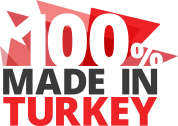FMVSS 302 Test Method and Application Steps
The FMVSS 302 test is a mandatory safety test in the automotive industry, used to determine the burning rate of materials inside vehicles. The test evaluates the fire resistance of cabin materials such as upholstery, plastics, and roof linings to enhance passenger safety. By limiting the flame spread rate within the vehicle, the standard plays a critical role in providing additional evacuation time during fire incidents.
What is FMVSS 302 Standard?
FMVSS (Federal Motor Vehicle Safety Standards) 302 is defined by the NHTSA (National Highway Traffic Safety Administration), part of the U.S. Department of Transportation. The standard sets fire safety requirements for motor vehicles. Since the 1970s, FMVSS 302 has been applied to restrict flame propagation speed in order to provide passengers with sufficient time to evacuate.
Purpose and Scope of FMVSS 302 Test
This test is applied to interior vehicle components such as seat upholstery, carpets, plastic panels, roof linings, and sun visors. Its scope is limited to materials used inside the passenger cabin. Engine bay or trunk materials are not covered by FMVSS 302. The goal is to ensure that interior materials meet defined safety levels before being integrated into the automotive manufacturing process.
FMVSS 302 Test Method and Application Steps
The FMVSS 302 test method consists of specific technical steps:
Sample Preparation
Dimensions: 356 mm length, 100 mm width
Samples are conditioned for 24 hours at 23°C ± 2°C and 50% ± 5% relative humidity before testing.
Apparatus and Test Setup
A horizontal burning test apparatus is used.
The specimen is mounted horizontally inside the chamber.
Flame Application
A 38 mm flame is applied to the free end of the sample for 15 seconds.
Propane or butane gas is typically used as the ignition source.
Burning Rate Measurement
After flame exposure, the time taken for the specimen to burn a specific distance is recorded.
The burning rate is calculated in mm/min.
FMVSS 302 Test Criteria
Maximum burning rate: 102 mm/min
If the material burns slower than this rate, it is considered to have “passed” the test.
If the flame extinguishes before reaching 51 mm, the sample is automatically rated as “passed.”
Equivalent or Similar Standards to FMVSS 302
Several international standards are equivalent or similar to FMVSS 302:
ISO 3795 – International burning test standard
TS ISO 3795 – Turkish adaptation
DIN 75200 – German automotive standard
TSE-EEC-95/28 – European Economic Community standard
CMVSS 302 – Canadian motor vehicle safety standard
Manufacturer-specific protocols: Mercedes ANH IV 95/28/EG, PSA Renault D45 1333, FIAT AUTO 7-G2000, Toyota TS M0500G, ASTM D 5132, SAE J369, etc.
These standards mainly differ in sample preparation, conditioning requirements, and flame spread limits.
Importance of the Test and Industry Applications
The FMVSS 302 test is a mandatory requirement in the automotive industry.
Applications:
Passenger cars
Commercial vehicles
Buses
Special-purpose vehicles
Importance:
Enhances fire safety
Ensures compliance for international vehicle exports
Plays a role in insurance and safety certification processes
Frequently Asked Questions (FAQ)
1. Which materials are subject to the FMVSS 302 test?
Seat upholstery, carpets, roof linings, plastic panels, and sun visors inside the vehicle cabin.
2. What is the pass criteria in the FMVSS 302 test?
The material’s burning rate must be below 102 mm/min. If the specimen extinguishes before 51 mm, it is automatically accepted as “passed.”
3. What is the difference between FMVSS 302 and ISO 3795?
FMVSS 302 is the U.S. standard, while ISO 3795 is the international equivalent. The procedures are largely similar, with minor differences in conditioning requirements.
4. Is FMVSS 302 mandatory in Turkey?
Turkey applies TS ISO 3795. However, FMVSS 302 may also be required depending on the target export market.
5. How long does the FMVSS 302 test take?
Excluding sample conditioning, the test takes approximately 15–30 minutes.
RELATED PRODUCTS
RELATED SUBJECTS
- Tensile Testing Machines
- What Is 3-Point Bending Test?
- What Is RCT (Ring Crush Test)?
- What Is The Coeffıcient of Friction (COF)?
- What Is a Heat-Sealing Test Machine (Surface Sealing Test Device)?
- What Is the Membrane Flexibility at Low Temperature Test?
- What is HIT – Hardy Integrity Tester (Diaper Impact Testing Device)?
- What is Measurement Uncertainty?
- What is a Conditioning Test Chamber? Applications and Importance
- What is the HDT Vicat Test?

